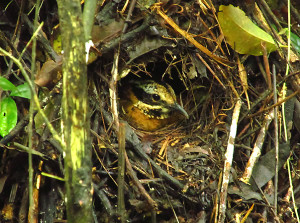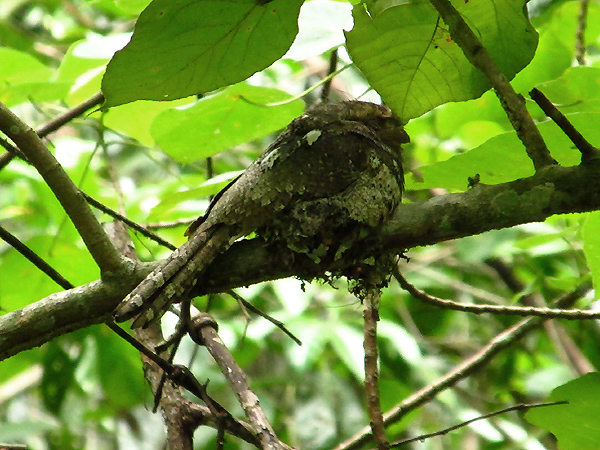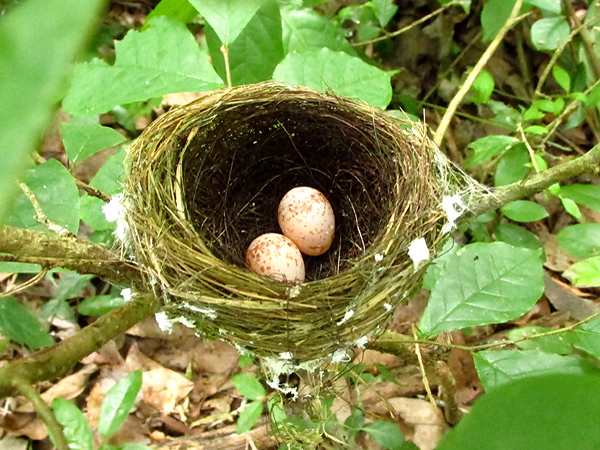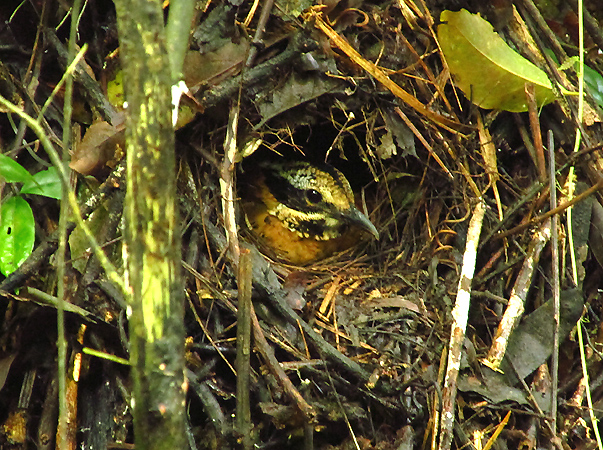
The majority of Thailand’s breeding birds nest between March and July, making this a great time to see many resident species as they construct nests, display and feed their young. In the forest this means that many of the resident species that can be very hard to find for much of the year suddenly become easier to see.
From 17th to 21st June I spent time at Kaeng Krachan national park and rice fields close to Petchaburi where I saw a lot of tricky to see forest birds as well as a lot of nesting species with young.
This Blyth’s Frogmouth had been sitting on a nest for some time and was much photographed. However, on the 18th June it had disappeared, it’s nest destroyed by heavy rain.

One of the rangers at Bang Krang showed us this nicely crafted Black-naped Monarch nest with these two lovely eggs inside it. Mother and father were away and we decided not to hang around and disturb them.

Fruiting trees always attract birds and along the road to Bang Krang we came across this juvenile Great Hornbill alongside its parents and a large flock of Oriental Pied Hornbills feasting on fruit.

We were lucky to be shown this Eared Pitta in its nest. This is a difficult bird to find at any time of the year and it was the first time I have seen one on its nest so this was a very nice experience. We did not stay very long as we did not want to scare the bird off of its nest.

Out in the rice fields we found this funny little scene; two juvenile Common Ioras that barely fitted into their nest while their parents were busy flying back and forwards with food for them.

Other species that we saw with nests included Dusky Broadbill, Black-and-red Broadbill, Long-tailed Broadbill, Silver-breasted Broadbill, Black-winged Stilt, Baya Weaver, Streaked Weaver and Asian Golden Weaver. Other species that we saw fledged juveniles of included Flavescent Bulbul, Black-crested Bulbul, Large Niltava, Dusky Broadbill and Ashy Woodswallow.
As you can see from the quality of the photographs, the light was often quite poor in the forest due to cloudy and rainy weather. The weather is one disadvantage of birding in June but the advantages are that the number of difficult to find birds is very high – much higher than can be expected in the dry season.


 June 25th, 2013
June 25th, 2013  Nick
Nick  Posted in
Posted in  Tags:
Tags: 









